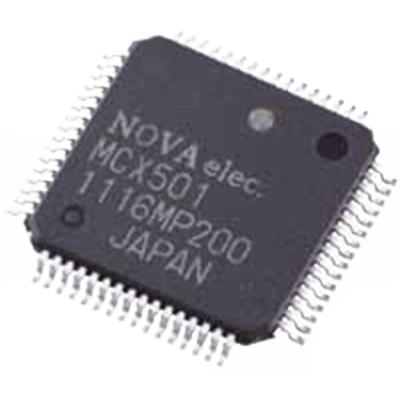What Is a Motion Controller?

A motion controller is a device that controls the motion of equipment driven by servomotors or other devices.
The user programs the motion to be realized in advance, and the motion controller executes it to control the motion of the equipment.
Uses of Motion Controllers
Motion controllers are used to control equipment driven by servomotors or linear motors. Therefore, they are applied to industrial robots and machine tools.
Specific applications are as follows:
- For control of cooperative robots
- For control of packaging machines for general consumables
- For control of commercial printing machines
- For control of high-speed press machines
- For control of automatic assembly robots
Principle of Motion Controllers
The principle of motion controllers differs depending on the output method.
Typical output methods are as follows:
1. Common Pulse Method
The common pulse method controls a motor with a rotation direction signal and a pulse driving command. The rotation direction signal controls forward and reverse rotation direction, and the pulse driving signal drives the motor.
2. 2-Way Pulse Method
The 2-directional pulse system is a system that controls the motor with two commands: an FWD pulse operation command and an REV pulse operation command. The motor is driven forward by an FWD pulse operation command and reversed by an REV pulse operation command.
3. Phase Difference Input Method
The phase difference input method determines the direction of rotation based on the phase difference between two pulse signals. Forward rotation is made when the reference pulse signal advances 90° and reverse rotation is made when the reference pulse signal lags 90°.
How to Select a Motion Controllers
Interpolation control is important when selecting a motion controller. Interpolation control is a method of synchronized control between multiple axes. There are two types of motion controllers: direct interpolation and circular interpolation.
1. Linear Interpolation
Linear interpolation is a control in which two motors are controlled simultaneously to move linearly to the desired position. The CPU performs calculations and control so that the motion moves in a straight line in a diagonal direction, rather than moving horizontally and then vertically. Since linear interpolation enables a linear move in the diagonal direction, the time required for positioning can be shortened.
2. Circular Interpolation
Circular interpolation is a control method in which the CPU calculates the movement to draw a circular arc when two motors are controlled simultaneously. Since the movement path is not linear, it takes longer to reach the target position than with linear interpolation. However, by using arc interpolation, it is possible to avoid obstacles on the route.
Other Information About the Motion Controllers
1. Features of Motion Controllers and PLCs
Motion controllers are similar to PLCs in that they automatically control equipment with user-custom programs. Motion controllers are unique in that they are better suited to control servo systems.
Motion controllers are often used for motion control instead of PLCs. One advantage of motion controllers is that they are suited for controlling multiple axes and synchronization when the total number of axes is large.
While PLCs are limited in the number of axes that can be controlled by a single PLC, motion controllers can control far more axes than that. For this reason, motion controllers are used in industrial machine tools and robots that require precise, multi-axis control.
2. Motion Controller and PLC Programming
The principle of PLCs and motion controllers differs in the method of processing in the CPU: PLCs are multitasking controllers that read all lines of the program each time they are executed and execute all lines at once. Therefore, the time required to read all lines of the program is the rate-limiting factor, and not enough computing time is available to perform complex control operations.
Motion controllers differ from PLCs in that the program is read and executed one line at a time. Therefore, compared to PLCs, the arithmetic processing required for one task is shorter, enabling high-speed processing.
In addition, the processing time of a single line of a motion controller is not affected by the increase in program capacity. Therefore, motion controllers can process complex systems such as servo motors at higher speeds.